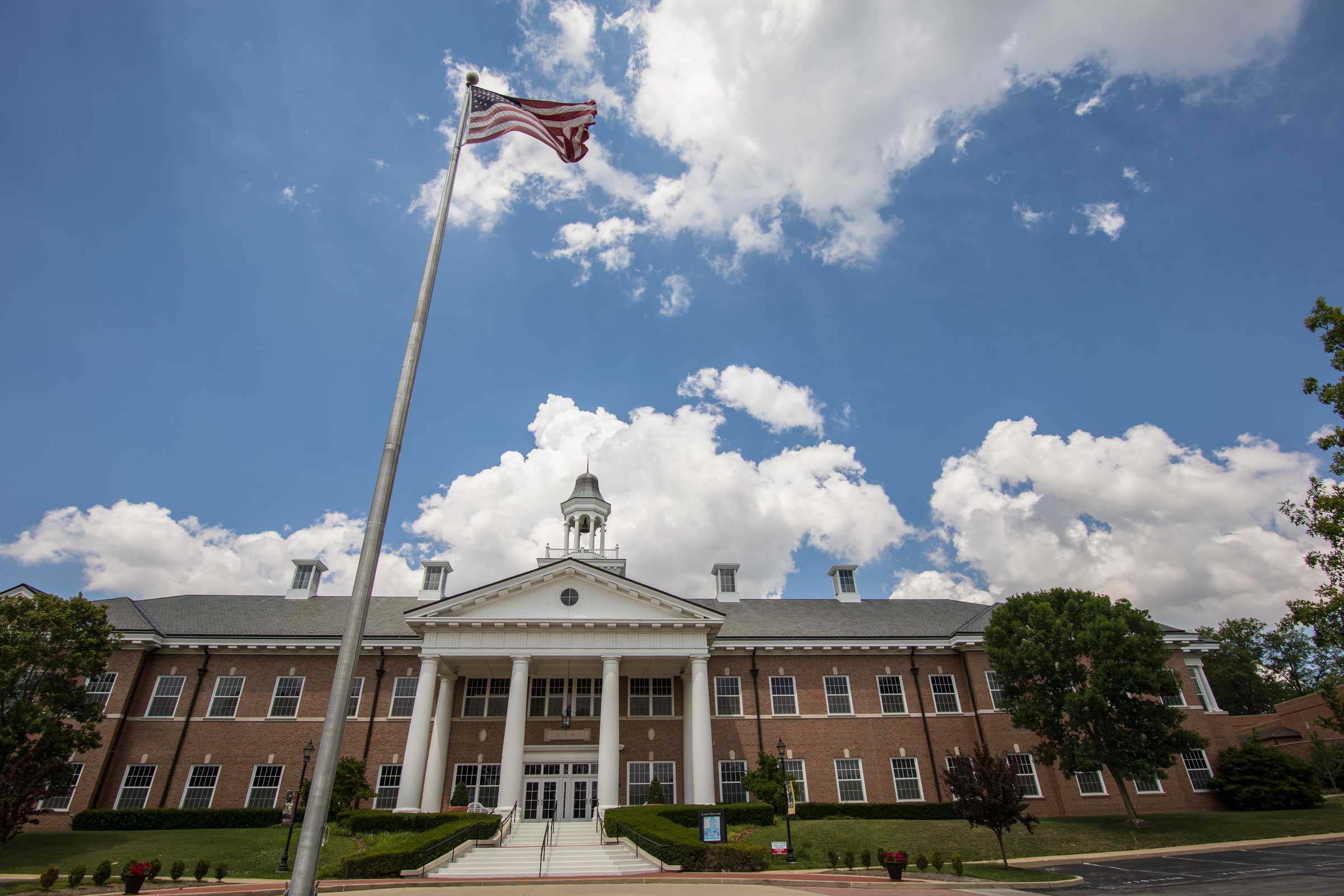In Memoriam
Saluting The Military Service of All Our Alumni and Faculty
And Remembering Those Who Have Made The Ultimate Sacrifice
Veterans Day (November 11), originally known as Armistice Day, salutes all honorably discharged military veterans of the United States Armed Forces. The first Armistice Day was declared by President Woodrow Wilson in 1919, marking the end of major World War I hostilities at the 11th hour of the 11th day of the 11th month of 1918. Armistice Day was renamed Veterans Day in June 1954 through a bill signed into law by President Dwight D. Eisenhower nine years after a World War II veteran, Raymond Weeks, conceived the idea of expanding the remembrance to celebrate all veterans, not only those who died in World War I.
Through the years, hundreds of St. Louis Country Day School, Mary Institute, and MICDS alumni have proudly worn the uniforms of our nation’s Armed Forces. They have served with distinction throughout the world, in times of war and in peacetime. As part of our school’s annual Veterans Day observance, we also pause to gratefully remember the 33 members of our community who perished while in military service during the World War II, Korean, or Vietnam eras. They include 26 alumni lost during World War II, four of them among the 36 graduates in the Class of 1941. Recognition of the lives of these fallen heroes helps sharpen our understanding of textbook accounts of military actions that now seem long ago and far away. As these biographical sketches suggest, in decades past as students, those profiled also struggled through exams and gazed out the classroom window, anticipating the Burroughs game or what life held for them. Their dreams and aspirations were sacrificed so that members of future generations might realize theirs.
Today, and indeed every day, we honor these fallen heroes—and all military veterans—with pride, honor, and respect.
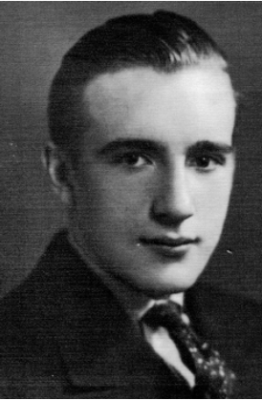
Yeoman 2nd Class John Dwight Bridge '37
U.S. Navy, World War II
Bridge attended Country Day during the 1934-35 school year, transferring from Kirkwood Public Schools, and he graduated from Westminster College. A trained concert violinist, he was attending business school in St. Louis at the time he joined the Navy, uncertain about what profession he wanted to pursue. Bridge was listed as missing in action on June 4, 1943, at the age of 24 when his PC-461 class submarine-chaser ship was sunk by a torpedo from an Italian submarine off the coast of Bizerte, Tunisia. Five crew members were lost. His name is inscribed on the Wall of the Missing in the North Africa American Cemetery and Memorial in Carthage, Tunisia. Bridge’s military awards included the Purple Heart.
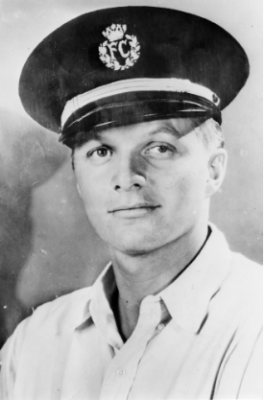
Captain Henri Chouteau Jr. '36
Royal Canadian Air Force, World War II
Chouteau was a captain and pilot in the Royal Canadian Air Force Ferry Command. He died at the age of 25 when an engine cut while taking off on a test flight in his Martin Baltimore IIIA bomber on May 30, 1943, near the Bahamas. He had been engaged in flying twin-motor and four-motor bombers from North America to the allies in Egypt and Africa. Chouteau attended Country Day from 1929 to 1935 and was an outstanding athlete in football, basketball, and track. He graduated from Western Military Academy and enrolled in Washington University for one year before going into the real estate business with his father. Two years before the United States entered the war, Chouteau enlisted in the R.A.F. He received his training near Toronto, Canada, after which he was transferred to the Ferry Command. Chouteau is buried in the Nassau War Cemetery, Nassau, Bahamas.
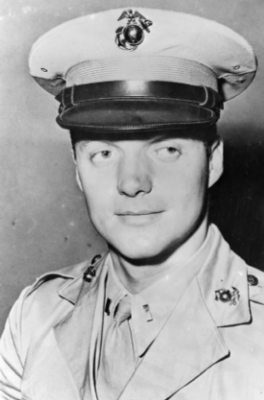
1st Lieutenant René Auguste Chouteau '39
U.S. Marine Corps, World War II
A member of the U.S. Marines Flying Corps, Chouteau was killed at the age of 23 when he was struck by the propeller of a plane taxiing on the ground at Pensacola, Florida, on September 5, 1944. He attended Country Day in 1934-35, playing Middle School football and compiling an excellent academic record. After graduating from Roosevelt High School, he enrolled in Yale University, where he was a member of the Beta Theta Pi fraternity, was Phi Beta Kappa, and was an All-American swimmer. His brother, Henri ’36, had died in the war a year earlier. Rene Chouteau is buried in the Barrancas National Cemetery, Pensacola.
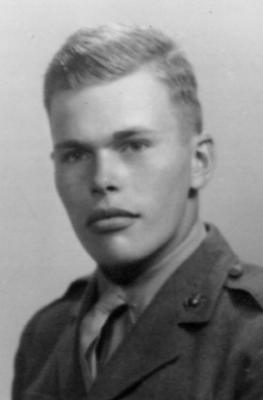
Corporal Judson Bemis Conant '42
U.S. Marine Corps, World War II
Conant saw action in the campaigns waged on Saipan, Guam, and Okinawa and was killed by a sniper on April 15, 1945, during the Battle of Okinawa in the final year of World War II. While at Country Day from 1936 to 1940, he played football and baseball, was a member of the school chorus, and was active in Boy Scouts. He transferred from CDS to the Taft School in Waterbury, Connecticut, after his sophomore year. Following graduation from Taft, in June 1943 he entered the service where he was trained as a Marine Raider. Conant, who was 20 years old at the time of his death, had planned to go to Princeton University after the war. He is buried in Bellefontaine Cemetery in St. Louis.
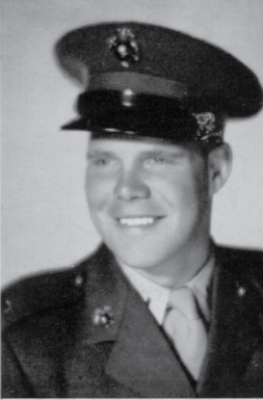
1st Lieutenant Grant Ridgway “Tubby” Ellis, CDS Faculty
U.S. Marine Corps, Korea
Ellis, known to his friends as «Tubby,» was killed by a sniper in the Seoul North region of Korea on September 30, 1950, after being called to active duty from the Marine Corps Reserves. He was 26. A very popular instructor at Country Day, Ellis taught English and math in the Lower School starting in 1948. Drawing upon experience gained as an outstanding football player at both the University of Pennsylvania and Cornell University, at CDS he served under his father-in-law, Robert «Pop» Hughes, first as assistant football coach in 1948 and then as head coach in 1949. Ellis is buried in Arlington National Cemetery. Ellis Field at MICDS is named in his memory, and his portrait, presented to the school by the Country Day Class of 1952, hangs in the office of the MICDS Upper School Head.
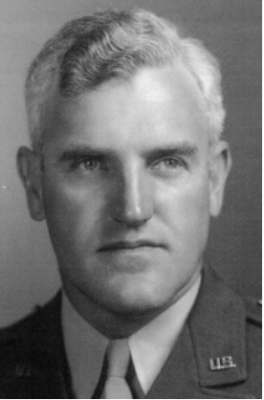
Colonel John Rison Fordyce Jr. '23
U.S. Army Air Forces, World War II
Fordyce attended CDS in 1917-18, the school’s first year. A combat wing commander, he died on May 23, 1943, at the age of 39 when an engine of his B-26 bomber exploded just as the plane became airborne while on an administrative flight in Algeria, North Africa. After graduating from Harvard University, Fordyce went into the Navy where he became a pilot in the late 1920s. He then returned to his native Arkansas, became an independent insurance agent, and joined the Arkansas Air National Guard. He was a second-term Arkansas State Representative when called to active duty in 1941 and was married with three children. In the war, he earned the Distinguished Flying Cross. Initially buried at a remote airfield in North Africa, his body was exhumed after the war and now rests in Roselawn Memorial Park, Little Rock, Arkansas.
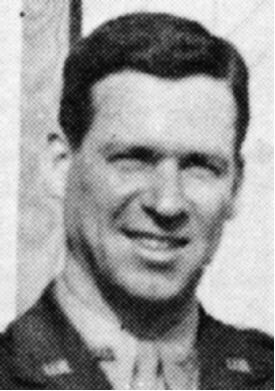
Captain John D. “Sisky” Franciscus '25
U.S. Army Air Forces, World War II
Franciscus died in an airplane crash northeast of Howe Brook, Maine, in 1942. Nicknamed «Sisky,» he attended CDS from 1919 to 1922. He was an honor student and a member of some of the school’s first interscholastic athletic teams. On May 24, 1942, Franciscus, 35, was a passenger aboard a C-40D (Lockheed 12 Electra Junior) aircraft on a transport mission from Bolling Field in Washington, D.C., to Houlton Air Force Base, Maine, from which the pilots were to ferry bombers across the Atlantic. Flying in poor weather, the crew could not locate an intermediate-stop airport, eventually hitting tree tops and crashing in a densely wooded area, killing all six aboard instantly. Weather and pilot inexperience under instrument conditions were later cited as factors. Franciscus is buried in Calvary Cemetery, St. Louis. He was married and the father of two children, including actor James Franciscus.
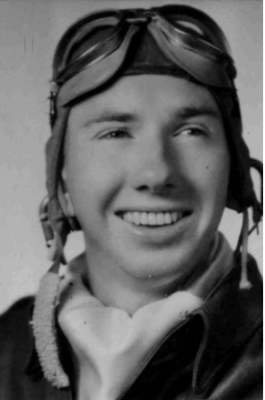
1st Lieutenant James Everett Fraser '35
U.S. Army Air Forces, World War II
A member of the 415th Bomber Squadron, 98th Bomber Group, of the U.S. Army Air Forces, Fraser was killed in action when the B-24 Liberator bomber on which he was a crew member exploded over its target in Austria on May 29, 1944. For his service, he was awarded the Air Medal with two Oak Leaf Clusters and the Purple Heart. At CDS for all eight years, he was the circulation manager of the student newspaper and a member of the Masque drama organization. He also earned varsity letters in soccer and baseball. After graduating from Country Day and before entering the military, Fraser attended Brown University. He was married at the time of his death at the age of 27. Fraser is buried in the Ardennes American Cemetery in Belgium.
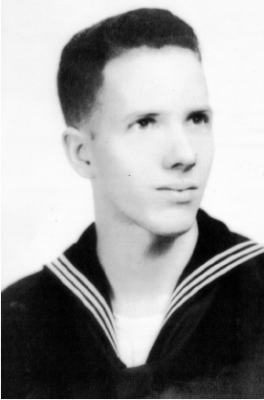
Ensign George B. Gannett Jr. '37
U.S. Navy, World War II
Gannett attended Country Day School from 1929 to 1933 (grades 5 through 8). Previously, he was a student at DeMun School, and after Country Day he was enrolled in Clayton High School. While at CDS, Gannett was consistently an honor student and was a member of the Glee Club. He went on to graduate from Washington University before entering the service. Gannett died of wounds suffered on a destroyer in the Pacific on December 26, 1943, at the age of 26. He had previously served on a submarine chaser in the Caribbean. Gannett had been married just nine months at the time of his death. He is buried in the Manila American Cemetery in the Philippines.
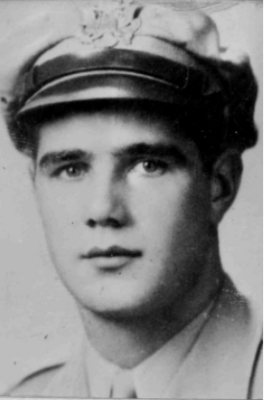
2nd Lieutenant Edward Chase Garvey '41
U.S. Army Air Forces, World War II
Garvey was killed when the B-24J Liberator he was piloting was shot down by anti-aircraft artillery flak near Herzogenburg and St. Polten, Austria, while on a mission out of Italy to strike oil refineries at Moosbierbaum, Austria, on February 7, 1945. He was 21 and was awarded the Air Medal with Oak Leaf Cluster. An eight-year CDS student, Garvey had been a member of the undefeated 1940 varsity basketball team on which his teammates included Carl Lawton ’41 and Don Oonk ’40, also war casualties. After CDS, Garvey attended the University of Illinois studying commerce and business administration. He shares a grave with four other members of his B-24 crew at Jefferson Barracks National Cemetery, St. Louis.
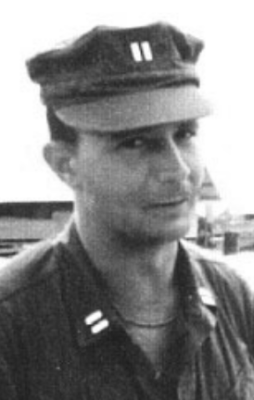
Captain Michael Peter Getlin '57
U.S. Marine Corps, Vietnam
Getlin was killed in Quang Tri Province, South Vietnam, during what historians now refer to as «The Battle of Getlin’s Corner.» He had attended Country Day in Classes 8 and 7 (grades 5 and 6) from 1949 to 1951, before moving to Pennsylvania with his family; he later graduated from Trinity College in Connecticut. Getlin had been in the service five years when, in July 1966 at age 27, he was sent to Vietnam as a company commander. On March 30, 1967, already wounded multiple times in the battle, Getlin attempted to cover the move of his men to safer ground. When three grenades landed at his feet, he threw one back at the North Vietnamese but was killed instantly by the other grenades and machine-gun fire. The Marines went on to gain the new position and repulse the enemy. Getlin was posthumously awarded the Navy Cross for extraordinary heroism.
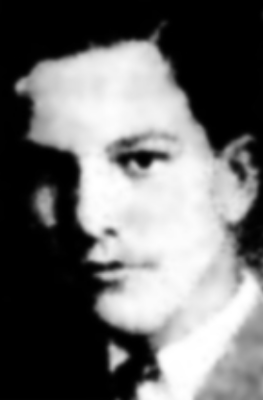
Cadet Scott Pope Hawkins '28
U.S. Navy, World War II
On January 6, 1938, as war drew near, Naval Aviation Cadet Hawkins died when the PBY-1 Catalina seaplane from the cruiser «USS Chicago» on which he was the second-seat observer hit an air pocket and took a sudden dive during a search off the coast of San Diego, California, for a missing Navy bomber crew of seven. Hawkins was catapulted out of his craft, struck the plane’s tail, and was lost at sea although his parachute was seen to open. During his three years at CDS starting in 1922, his activities included football, soccer, and basketball. Hawkins went on to graduate from the Washington University School of Engineering in June 1932, also having studied at MIT and Princeton University. He was 29 when he died.
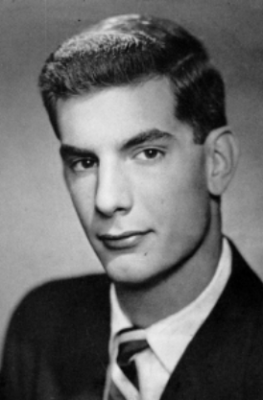
Private 1st Class John Francis Hennessey III '53
U.S. Marine Corps, Korea
Hennessey was killed in an auto accident near Clarksville, Tennessee, on November 26, 1954, while returning to his Marine Corps base in Clarksville after Thanksgiving leave. He was 20 years old and a passenger in a car, driven by a friend, which plunged down a steep embankment, with the wreckage undiscovered for several hours. At Country Day, Hennessey won the Harvard Cup for excellence in athletics and was All-ABC League in football for two years and baseball for one year. He also played basketball and was in Troubadours and Glee Club. A talented artist, when he graduated from CDS he was considering a career in advertising. Hennessey had enlisted in the Marines eight months earlier after attending Southern Methodist University for one year.
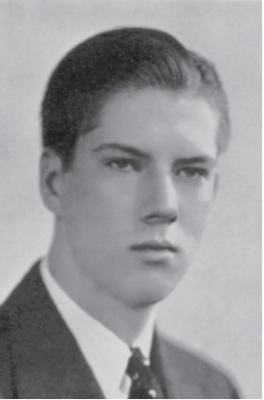
1st Lieutenant Alfred Henry Herman II '40
U.S. Army, Korea
Herman attended CDS from 1935 to 1940. A 1945 graduate of the U.S. Military Academy at West Point, he was killed in action in South Korea on May 18, 1951, at age 28. Three months earlier, he had led a Ranger unit that routed two Chinese Communist regiments in Korea. He previously served two and one-half years with the Eleventh Airborne Division in Japan before being given command of the Ranger unit on the central front in Korea. Herman’s military awards included the Bronze Star and Purple Heart. He is buried at the National Memorial Cemetery of the Pacific in Honolulu, Hawaii. While at Country Day, Herman made the local news when a 6-foot alligator he had donated to the school (when his parents evicted his home zoo) escaped its enclosure and went wandering through nearby neighborhoods.
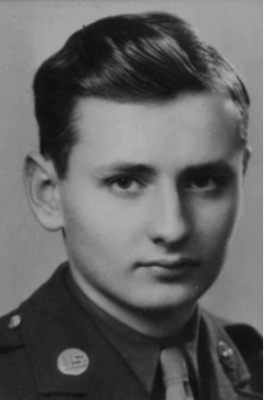
Corporal Waldo Clark Jackman Jr. '41
U.S. Army, World War II
Jackman died in a collision at sea on March 13, 1945, at the age of 22. While operating in a convoy during a storm northwest of the Azores, the French aircraft carrier «Bearn» lost power and collided with the U.S. troop transport «J.W. McAndrew,» resulting in the loss of 68 American troops including Corporal Jackman, who was listed as missing in action. While at CDS, Jackman was one of the school’s best science students. He then attended Washington University before entering the Army. He was first stationed at the University of Kentucky and then received instruction in advanced electrical engineering at both Michigan College of Technology & Mining and the University of Illinois. Before being deployed overseas, he was sent to Carnegie Institute of Technology.
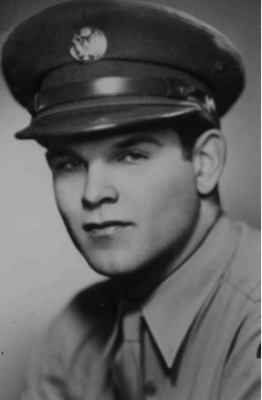
Corporal Carl Stewart Lawton Jr. '41
U.S. Army, World War II
Lawton died in Lorraine, France, on September 22, 1944. A paratrooper, he served as a Technical Corporal in a U.S. Army Ranger battalion and was killed in the invasion of France when he stepped on a land mine. At CDS, he was regarded as one of the best athletes in school history, earning 13 varsity letters and becoming the only school graduate to earn five letters in one year. He was also on the school’s undefeated 1940 basketball team, was class president twice, and was on the student council. His CDS honors included winning the Harvard and Princeton Cups for athletic achievement. In the Army, Lawton had been serving as athletic director of the 78th Infantry Division but resigned this post and volunteered for Ranger service. He had been overseas approximately three weeks when he was killed at the age of 22.
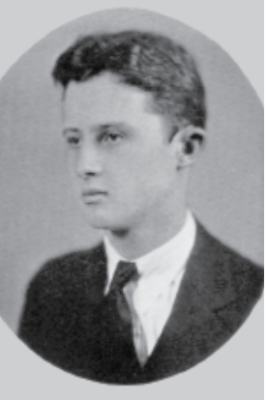
2nd Lieutenant Donald Chylo McCord Jr. '31
U.S. Army Air Forces, World War II
McCord was lost at sea in the Pacific in 1942 at age 29. In late 1941, several months after being stationed in Hawaii, McCord had nearly died when the bomber on which he was a radio operator made a forced landing in the Pacific «somewhere off Oahu.» He and his crew inflated a collapsible rubber boat and floated for three days and four nights before being rescued, their only food an albatross he shot with his .45 automatic. On August 7, 1942, McCord was a crew member aboard B-17E «Kai-O-Keleiwa» which took off from Koumac Airfield, New Caledonia, on a search mission and never returned. He was awarded the Air Medal for valor and the Purple Heart. During his two years at Country Day, McCord had been a soccer player and was on the fencing team.
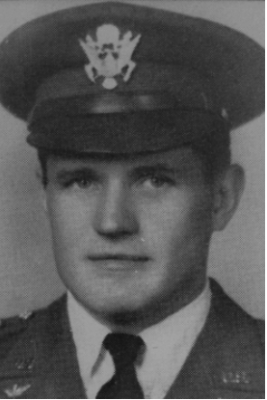
2nd Lieutenant Stratford Lee Morton Jr. '31
U.S. Army Air Forces, World War II
Morton died on June 21, 1941, when the Douglas A-20 bomber he was piloting crashed near LaGrange, Georgia, in a violent storm following bombing practice at Ft. Benning. At CDS, he was a standout athlete in football, soccer, wrestling, and track, and he went on to become right halfback on Yale’s 1934 «iron man» team, playing five entire consecutive games without relief. Morton also captained Yale’s rugby team. He joined the Army Air Corps in 1938 after working in the family insurance business and attending University of Virginia Law School. He was killed when his twin-motored plane ran into a rain and electrical storm while en route to Chattanooga, Tennessee, and suddenly nosed down and crashed, possibly falling out of control due to the «suction of the storm.» He was 28.
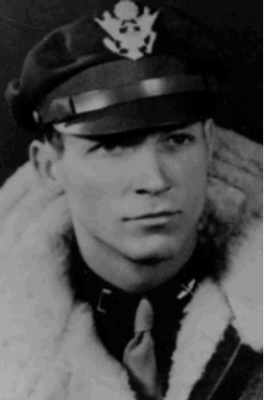
1st Lieutenant Edward Turner Noland Jr. '36
U.S. Army Air Forces, World War II
Noland died on November 18, 1944, at age 27 when his B-25 Mitchell aircraft, after its bombs were successfully released during a combat mission over Casarsa, Italy, received several anti-aircraft direct hits, causing it to explode and crash. Casarsa is 45 miles north of Venice. Noland was posthumously awarded the Distinguished Flying Cross for extraordinary achievement as a bombardier on more than 55 combat missions, including one run when, wounded by enemy fire, he persevered to achieve his objective of attacking an enemy troop and gun concentration. Noland also was awarded an Air Medal with Silver Oak-Leaf Cluster for precision bombing during six July-August 1944 attacks in Italy. During his five years at CDS, Noland proved himself an excellent athlete, earning football, soccer, baseball, and track letters.
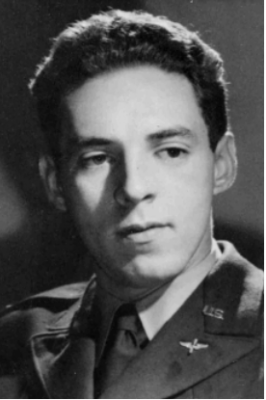
2nd Lieutenant Donald Alfred Oonk '40
U.S. Army Air Forces, World War II
Oonk was killed when his bomber was shot down near Raciborz, Poland, on December 2, 1944. The B-17G Flying Fortress on which Oonk, 22, was navigator suffered serious damage while on a mission from Tortorella, Italy, to strike the oil refineries at Blechhammer in German-occupied Poland. Oonk’s body and those of eight of his crewmates were buried by Allied sympathizers on a mountain top with only the wreckage of their plane marking the shallow graves. In 1950, all were reinterred in one grave at Jefferson Barracks National Cemetery in St. Louis. During his four years at CDS, Oonk played football and was starting center on the undefeated 1940 basketball team. Today at MICDS, the Oonk Awards honor Middle School achievements in eighth-grade boys sports.
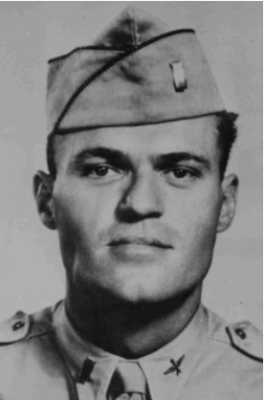
2nd Lieutenant Walter Lewis Pfeffer Jr. '35
U.S. Army, World War II
Pfeffer died on July 7, 1944, when his heavy bomber crashed near Lorraine, Kansas, killing all six on board. He was 26 years ago. The B-29 Superfortress, based at the Smoky Hill Army Airfield near Salina, Kansas, was on a training flight when it exploded and burned while attempting a forced landing during a rainstorm. The crew was scheduled to soon be sent overseas for combat duty. During Pfeffer’s five years at Country Day, he worked on the business staff of the student newspaper and as a yearbook writer. His athletic awards included letters in football, wrestling, and track. Pfeffer went on to graduate from the University of Missouri. He is buried in College Hill Cemetery, Lebanon, Illinois.
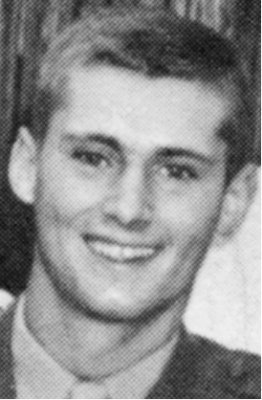
Private 1st Class Christopher Podmaniczky '64
U.S. Marine Corps, Vietnam
Podmaniczky was killed by small arms fire while on patrol on April 21, 1967, during an ambush by a dug-in Viet Cong force in the village of Bihn Son, Quang Nam Province, South Vietnam. He was part of «Operation Union,» a month-long search-and-destroy mission in the Que Son Valley which claimed the lives of 110 Marines. Podmaniczky was 20 years old and was serving with the 1st Marine Regiment. A Country Day student from 1956 through 1960 in the Class of 1964, he played tennis, football, and basketball. «Pod» went on to graduate from Whitfield School and studied at Westminster College before enlisting in the Marines.
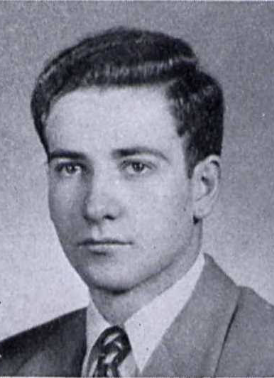
2nd Lieutenant James Arthur Sevin '45
U.S. Air Force, Korea
Sevin was killed when his malfunctioning jet fighter crashed into a snowbank 76 miles north of Anchorage, Alaska, on March 31, 1953. He was 25 years old. Radar observer in a two-man crew, he apparently ejected too close to the ground or his parachute failed to open. The pilot also died. Sevin had been stationed at Elmendorf Air Force Base in Anchorage. Sevin attended Country Day for six years during which he was on the yearbook staff at CDS and also played football and baseball. He went on to graduate from Phillips Exeter Academy and Harvard University.
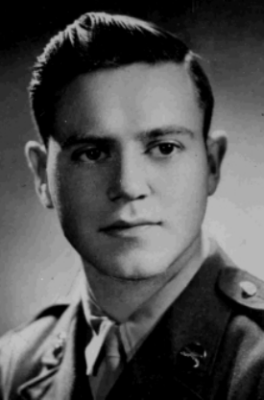
Corporal Willard Bailey Shelp III '42
U.S. Army Air Forces, World War II
A radio operator on a U.S. Army Air Ferrying Command plane, Shelp was accidentally killed in the line of duty in Egypt on September 16, 1944, at the age of 20. After four years at Country Day School, he went almost immediately into the Army, enlisting in December 1942. He became a corporal at Fort Riley in Kansas, later transferring to the Air Corps where he became a member of the Ferrying Command. While at CDS, Shelp earned varsity letters in football, soccer, and track, and he was track co-captain during his senior year. He is buried in Bellefontaine Cemetery, St. Louis.
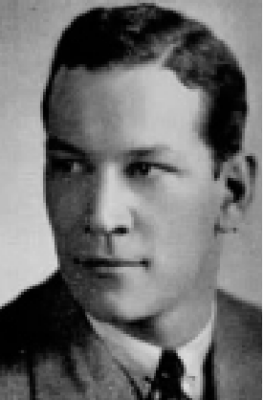
Corporal David Ramsay Small '32
U.S. Army Air Forces, World War II
Small died on October 29, 1943, on Trinidad and Tobago off the coast of Venezuela at the age of 29. Entering Country Day in Class 6 (7th grade), he left school in 1931 just before his senior year, transferring to Stony Brook School. While at CDS, he was active in the school’s drama organizations and was an honor student. He went on to graduate from Princeton University in 1937 and attended the University of Michigan Law School to possibly follow in the footsteps of his father, a corporate attorney. Small was married in 1942 and worked for Anheuser Busch before entering the military. He is buried in Green Mount Cemetery, Belleville, Illinois.
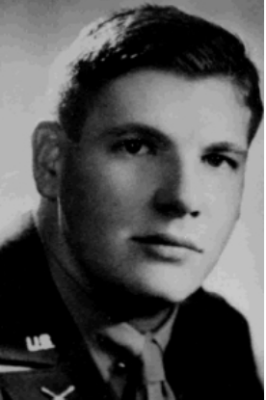
1st Lieutenant Edwin Tillay Stanard Jr. '38
U.S. Army, World War II
Stanard was killed in action with the First Army in Germany on February 3, 1945, at the age of 24 while serving in an advance artillery observation post. Stanard had enlisted immediately following his graduation from Princeton University in June 1942. An artillery officer with the First Army, 15th Field Artillery Regiment, he had been awarded the Bronze Star and Presidential Unit Citation, and he received the Purple Heart posthumously. At Country Day, Stanard lettered in football and soccer. He also wrote for the student newspaper and was a member of the Masque drama organization. He was married in 1942 at Ft. Sill, Oklahoma, while he was in officers’ training school; he and his wife had one daughter. Stanard is buried in Bellefontaine Cemetery, St. Louis.
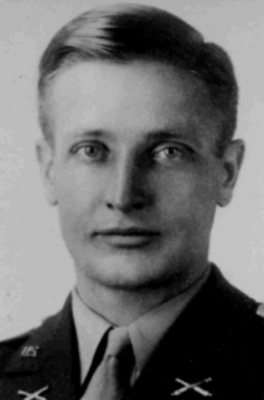
Lieutenant Howard Voorheis Stephens Jr. '34
U.S. Army, World War II
Stephens was killed in Belgium during the Battle of the Bulge on December 17, 1944, at age 28 while serving with the First Army. Several hours before he died, he was awarded on the field the Bronze Star for gallantry after he helped slow the Nazi drive in Belgium by holding a strategic crossroads position until reinforcements arrived, although outnumbered sometimes as much as eight to one. In eight years at CDS, Stephens was state singles and doubles tennis champion, and he also played football and basketball. He was captain of the 1933-34 basketball team which finished 14-0 and was the only undefeated high school quintet in the city. After graduation, Stephens moved on to Yale University where he again excelled in tennis. When he enlisted before Pearl Harbor, he was assistant general factory superintendent of a family-owned shoe factory.
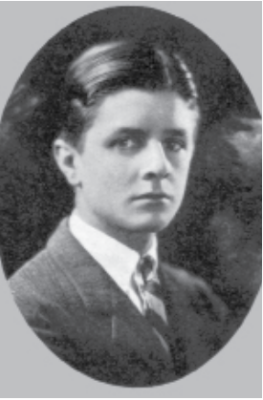
Lieutenant George Shepley Tiffany Jr. '25
U.S. Navy, World War II
Tiffany was killed on January 7, 1944, at age 37 while on U.S. Navy convoy duty 70 miles off Cape May, New Jersey. His gunboat «St. Augustine,» leading a convoy from New York to Guantanamo Bay, Cuba, was accidentally rammed by the merchant tanker «Camas Meadows» late at night when both were running without navigation lights. The gunboat sank within just a few minutes, and 115 of 145 crew members were lost. The 272-foot-long «St. Augustine» was originally a luxury pleasure yacht built in 1929; it was converted by the Navy for military use. Tiffany, a seven-year student at Country Day, was junior and senior class president, and he served as business manager for the yearbook and student newspaper. He was one of four brothers who attended CDS. Tiffany went on to Harvard University, where he graduated four years later.
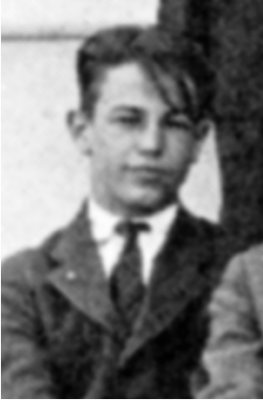
Private 1st Class Harry George Wells '30
U.S. Army Air Forces, World War II
Wells died in the early-morning hours of February 1, 1945, in a Waxahachie, Texas, hospital after being involved in a two-car auto accident while heading home on furlough from Waco Air Field in Texas. He had been seriously injured when the automobile in which he was riding struck the rear of another car and overturned. He attended Country Day from 1922 to 1925 and was a founding member of the school’s Boy Scout troop. Wells, 34, was married and had been employed by the Otis Elevator company before enlisting in 1943. He is buried in Oak Grove Cemetery, St. Louis.
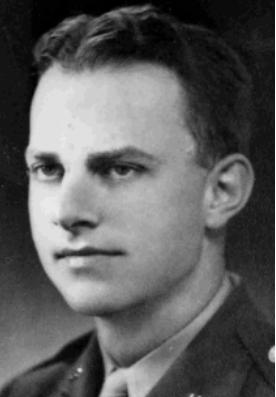
1st Lieutenant Stanard Tilton Wheaton '32
U.S. Army, World War II
Wheaton was killed in action in Libramont, Belgium, during the Battle of the Bulge on December 26, 1944, at the age of 30. He died while serving with the forces of General Courtney Hodges in a tank destroyer force. Wheaton attended officers’ training at Fort Sill, Oklahoma, becoming a 1st Lieutenant before going overseas. In three years at CDS, he wrote for the student newspaper and yearbook, and he was vice-president of the Troubadours. He is buried in Bellefontaine Cemetery, St. Louis.
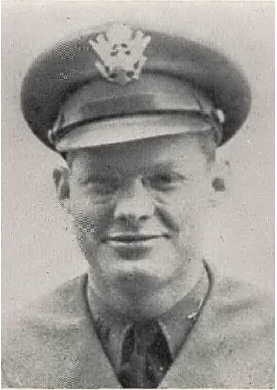
Captain Elmer Clarence “Sonny” Wirtz Jr. '32
U.S. Army, World War II
Captain of his field artillery battalion, Wirtz was listed as missing in action on Corregidor in the Philippine Islands in May 1942. He was reported to have died on June 21, 1942, at the age of 26 after the 11-day Bataan Death March, in Cabanatuan, Nueva Ecija Province, Central Luzon, Philippines. Cabanatuan was the site of three Japanese-run Prisoner Of War camps, and it is believed that Wirtz was imprisoned in newly opened Cabanatuan Camp #1 along with thousands of other Americans and that he died there of malaria. His name is one of 2,756 listed on the Cabanatuan American Memorial at the former camp site. Attending Country Day School for three years, 1926-1929, Wirtz took part in Troubadours dramatic productions. He then attended Culver Military Academy, Massachusetts Institute of Technology, and Washington University. Wirtz’s body was later reinterred in Calvary Cemetery, St. Louis.
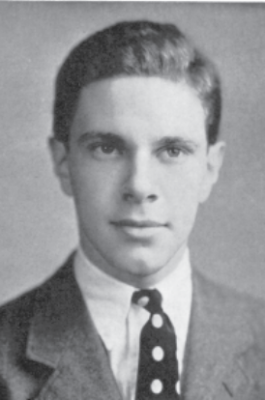
2nd Lieutenant David Philip Wohl Jr. '41
U.S. Army Air Forces, World War II
Wohl was killed in action over Europe on March 3, 1944, at age 21 in the first daylight U.S. attack on Berlin. On his 14th mission, he was bombardier of the B-17G Flying Fortress «Paper Doll,» on which he was often a crew member, when it collided mid-air with another B-17G and crashed in the North Sea near Wesermunde, Germany. He was one of 10 «Paper Doll» crewmen who perished in the crash. Wohl was awarded the Air Medal with Oak Leaf Cluster for courage and skill and the Purple Heart with Oak Leaf Cluster. He was attending William & Mary College when he enlisted in the Army Air Corps on June 27, 1942. At CDS for eight years, Wohl was active in the Masque and Troubadours. The David P. Wohl Jr. Memorial Clinic of the Washington University School of Medicine was established in his honor.
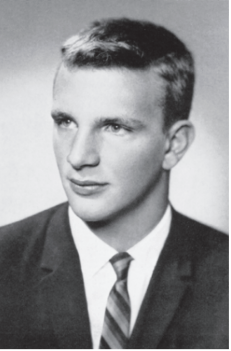
1st Lieutenant James Schenler Wood ’61
U.S. Army, Vietnam
Wood was killed by small arms fire on June 6, 1968, in Binh Duong Province in southeastern Vietnam, north of Saigon, at the age of 25. He attended CDS for eight years and was active in the Troubadours, Masque, and Glee Club, and was a varsity baseball team member. He went on to graduate from Washington & Lee University and engage in graduate work at Washington University before enlisting in the Army in 1966. Wood completed Officer Candidate School at Fort Benning, Georgia, and was an instructor there before deploying to Vietnam in April 1968 as an infantry unit commander. He died less than two months later. Wood is buried in Oak Grove Cemetery, St. Louis. The James Schenler Wood Humanitarian Award at MICDS is presented annually to students who have made sacrifices in service of others.
Every effort has been made to mention and suitably honor all fallen military veterans associated with St. Louis Country Day School, Mary Institute, or MICDS. Information has been obtained from the Country Day News, internet resources, the CDS Archives, and relatives of the deceased. If you know of anyone who should be included in future Veterans Day programs or if you can provide additional information/photographs for the veterans listed here, please contact the MICDS Development Office at 314-995-7312, or send an email to ljones@micds.org.
